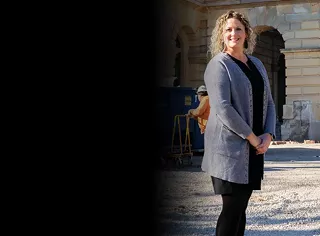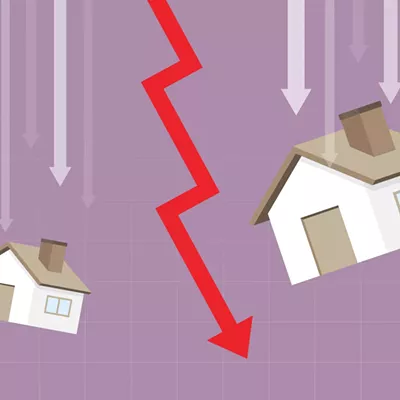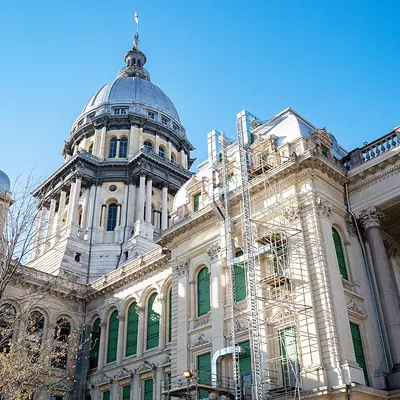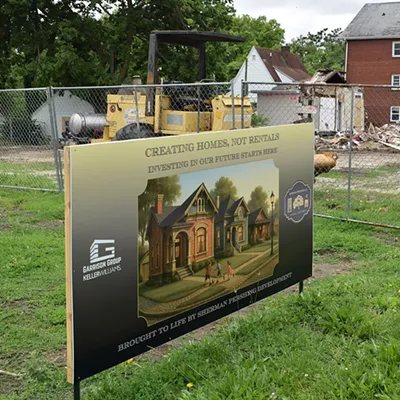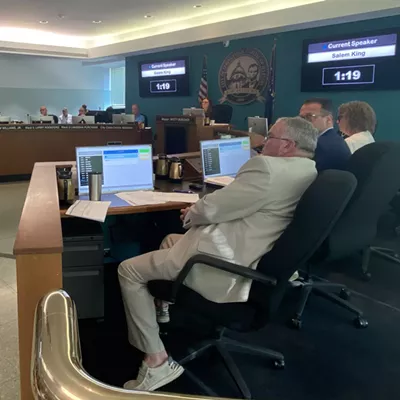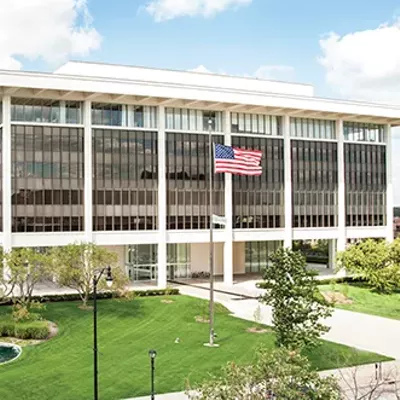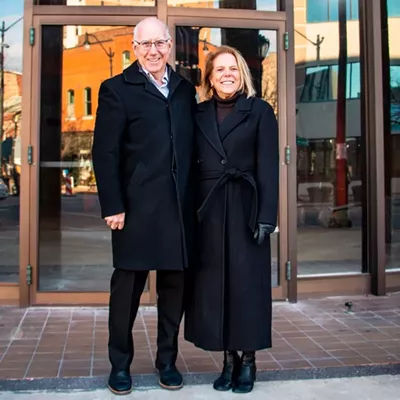By David Blanchette
Andrea Aggertt was hired in October 2019 to serve as the Architect of the Capitol. She is currently overseeing $350 million in work at the Capitol complex that was allocated as part of Rebuild Illinois, the first capital spending bill approved in the past decade. Aggertt is also responsible for completion and implementation of the master plan, which was paused more than a decade ago due to lack of funding.
Aggertt and her husband, John, relocated to Springfield from Bloomington, where she had spent the past 15 y ears working for Shive-Hattery, a national architecture and engineering firm. She grew up in a small town in Illinois and says she never considered becoming an architect until she was attending college at Southern Illinois University Carbondale. Aggertt went on to receive her master’s degree in architecture from the University of Illinois at Urbana-Champaign.
Did your young life give you an indication that you might someday be an architect? I was born and raised in Newton in south-central Illinois, and I spent a lot of my days helping take care of the thousands of hogs on our farm. Growing up on a hog farm, there weren’t any great architectural influences because it was frankly just our house, the farm and the silos.
I went to a small high school and there really wasn’t a focus put on potential careers. I decided to go to Southern Illinois University Carbondale; I had a couple of cousins that went there, so I knew I would at least have some familiar faces when I got there. I didn’t have a specific career path in mind. I had thoughts about possibly going into the health care profession.
When did you decide to study to be an architect? I walked by a classroom at college every single day where all of the students were working on building three-dimensional models out of cardboard or foam core, plus drawing and sketching. It was the architecture program, and I thought that might be something I’d be interested in and potentially be good at.
I applied and was accepted to the architecture program, received my bachelor of science in architectural studies, and I felt there was so much more to learn before getting a full-time job. I went to graduate school at the University of Illinois at Urbana-Champaign and earned my master’s degree. I was honored that I was asked to give the student commencement speech for the College of Fine & Applied Arts.
Your first professional job was with the Bloomington, Illinois, office of Shive-Hattery Architecture & Engineering. What did you learn there? They had offices across the Midwest, and even though the Bloomington office was small, I had a knowledge base I could tap into from other architects and engineers who worked for the company in that region.
I became licensed in nine states, and I did projects relating to health care, commercial, retail, hospitality, banks; I even did some casinos. I did all kinds of architecture that I was able to get my hands on.
What did you enjoy most about being an architect? Architecture is really about solving a problem. For example, if I was asked to design an infusion clinic where people receive chemotherapy; you have to understand what that patient is feeling on the day they arrive, how can they be comforted while they are there, all the way until they leave the building.
Then you also have to understand the efficiencies and work processes that a staff member has to perform on a daily basis. So you really immerse yourself in whatever design you’re working on.
How did you end up being the Architect of the Capitol? After 15 years of working for Shive-Hattery, I was ready for a change. A peer of mine sent me the job posting for the Architect of the Capitol. I had no idea that there was an Architect of the Capitol position. So I thought I would apply, but I was sure there was somebody better suited for the position than I. I didn’t have a lot of experience in historical architecture, but I had a lot of experience in running teams and running large projects successfully. So I applied and received several interviews and then the offer of the position. I started in October 2019.
What does the Architect of the Capitol do? I joke that we are in charge of multimillion-dollar construction contracts and we also get a phone call when a bat gets into a building. We run the entire gamut.
We are really here to support the Legislature. After an election, we help to coordinate office refreshes with things like new carpet, paint and asbestos abatement. But the last two-and-a-half years we have been really focused on the large construction projects that are going on north of the William G. Stratton Building and at the North Wing of the Capitol.
Every single day when I walk in that building, I can’t believe that I’m involved in this. I can’t believe I have the honor to help make the Statehouse the best it can be for everybody here in Illinois.
What parts of the Capitol complex project may most people be unaware of? One of the biggest obstacles at the Capitol is that not all of the areas are ADA compliant. That’s our biggest thing, we want to make sure the Statehouse is fully compliant.
All of those utilities that people can’t see behind the walls are aging. We have pipes that are 50 and 60 years old that are corroded and beyond their life span. Those are the things we are focusing on so the Statehouse can still serve taxpayers 100 years from now.
What is it like being a woman in a male-dominated field? I often sit in meetings with 25 or 30 people where I am the only female, and I am in charge of the project. I get awestruck every time that I can be in charge of such a large project and also be a role model for other women. I think women often use the phrase that I used, ‘I didn’t think I would ever be selected for this position.’ I think as women, we are often our own worst critics. I do feel like a bit of a pioneer.
What advice would you give to young people who may be considering a career in architecture? It’s not easy. You may see your college friends going out and having fun of an evening, and often you’re busy working on a project or presentation that you have to give the next day. But I promise when you get to look at a building project that you have either spearheaded or helped to complete, it is the most satisfying thing. Because what you put on paper, you can now see in real life.
Also be sure to write down your dreams, because if you write your dreams down, they can and will come true with hard work.

